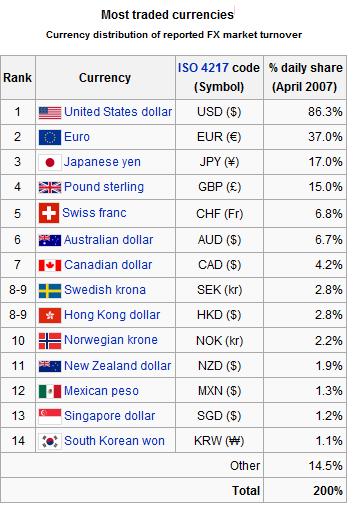
VI. Reading and comprehension.
Exercise 14. Read the text B for 10 minutes.
Notes to the text:
monetary policy - кредитно-грошова політика
money supply - грошова маса в обігу
to lend - давати позику
interest rates - відсоткові ставки
loose monetary policy - вільна кредитно-грошова політика
tight monetary policy - обмежуюча кредитно-грошова політика
consequences - наслідки
Monetary policy
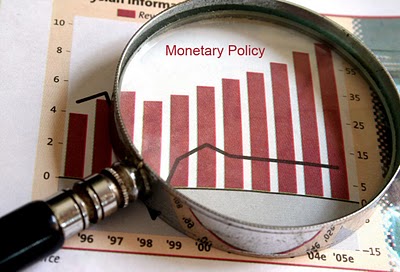 In
learning about monetary policy, the first thing one must understand
is the role of Central banks. They are one of the sources of money;
they can add or subtract money from the economy. For example a
Central bank can simply produce more money or cut the amount it lends
to banks, if thinks one of those actions is warranted. Managing the
money supply is the responsibility of Central banks. They operate
independently of the government in most cases and have the goal of
keeping the economy growing without causing inflation. It does that
by trying to manage the money supply and interest rates. This process
is called monetary policy.
In
learning about monetary policy, the first thing one must understand
is the role of Central banks. They are one of the sources of money;
they can add or subtract money from the economy. For example a
Central bank can simply produce more money or cut the amount it lends
to banks, if thinks one of those actions is warranted. Managing the
money supply is the responsibility of Central banks. They operate
independently of the government in most cases and have the goal of
keeping the economy growing without causing inflation. It does that
by trying to manage the money supply and interest rates. This process
is called monetary policy.
A nation`monetary policy is the management of the money placed into the economy and the management of interest rates. Inflation is sometimes caused by having too much money in the economy. When that happens Central banks cut the money supply and increases interest rates. When business find it hard to borrow money, they often cut back on production and lay off workers. This slows the economy and lowers inflation.
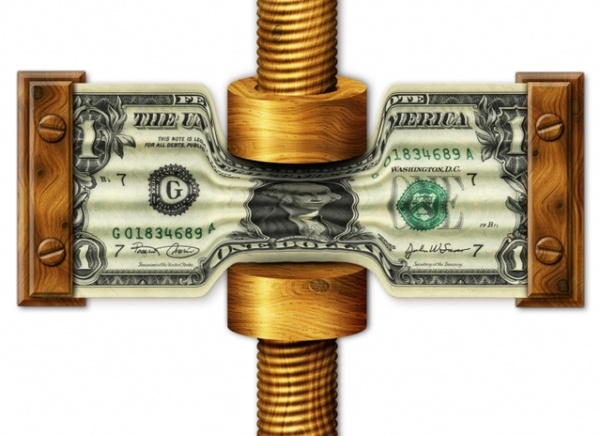 When unemployment gets too high, a Central bank may put more money
into the economy and lower credit rates. This stimulates spending and
ecourages business growth, which leads to the hiring of more people.
When you read that a Central bank carries
out "loose monetary policy" or
"is lowering interest rates", it means that it is trying to
stimulate the economy (that is increase consumer spending and
increase business investment). The tight monetary policy is one in
which Central banks are restricting the supply of money and
increasing credit costs to lower inflation. Economist such as
Wicksted, Robertson have always considered money as a passive factor.
According to them, money should play only a role of medium of
exchange and not more than that. Therefore, the monetary policy
should regulate the supply of money. The change in money supply
creates monetary disequilibrium. Thus monetary policy has to regulate
the supply of money and neutralize the effect of money expansion.
However this objective of a monetary policy is always criticized on
the ground that if money supply is kept constant then it would be
difficult to attain price stability. As you can imagine, such
intervention into free markets can have serious consequences for
business. That`s why the actions of Central banks are watched closely
to see what the monetary policy is now and will be in the future.
When unemployment gets too high, a Central bank may put more money
into the economy and lower credit rates. This stimulates spending and
ecourages business growth, which leads to the hiring of more people.
When you read that a Central bank carries
out "loose monetary policy" or
"is lowering interest rates", it means that it is trying to
stimulate the economy (that is increase consumer spending and
increase business investment). The tight monetary policy is one in
which Central banks are restricting the supply of money and
increasing credit costs to lower inflation. Economist such as
Wicksted, Robertson have always considered money as a passive factor.
According to them, money should play only a role of medium of
exchange and not more than that. Therefore, the monetary policy
should regulate the supply of money. The change in money supply
creates monetary disequilibrium. Thus monetary policy has to regulate
the supply of money and neutralize the effect of money expansion.
However this objective of a monetary policy is always criticized on
the ground that if money supply is kept constant then it would be
difficult to attain price stability. As you can imagine, such
intervention into free markets can have serious consequences for
business. That`s why the actions of Central banks are watched closely
to see what the monetary policy is now and will be in the future.
Exercise 15. Define the terms by definitions:
1. The management of the money placed into the economy and the management of interest rates.
2. Too much money in the economy.
3. Policy which tends to increase consumer spending and increase business investment.
4. Policy directed on restricting the supply of money and increasing credit costs to lower inflation.
Exercise 16. Point out statements that do not correspond to the text. Explain why.
1. Central banks can add or subtract money from the economy.
2. The main goal of the monetary policy is keeping the economy growing without causing inflation by trying to manage taxes and government spending.
3. When unemployment gets too high, a Central bank may put more money into the economy and increase credit rates.
4. Economist such as Wicksted, Robertson have always considered money as a passive factor, playing only a role of medium of exchange.
5. The change in money supply creates monetary equilibrium.
Exercise 17. Skim the following chart for 10 minutes:
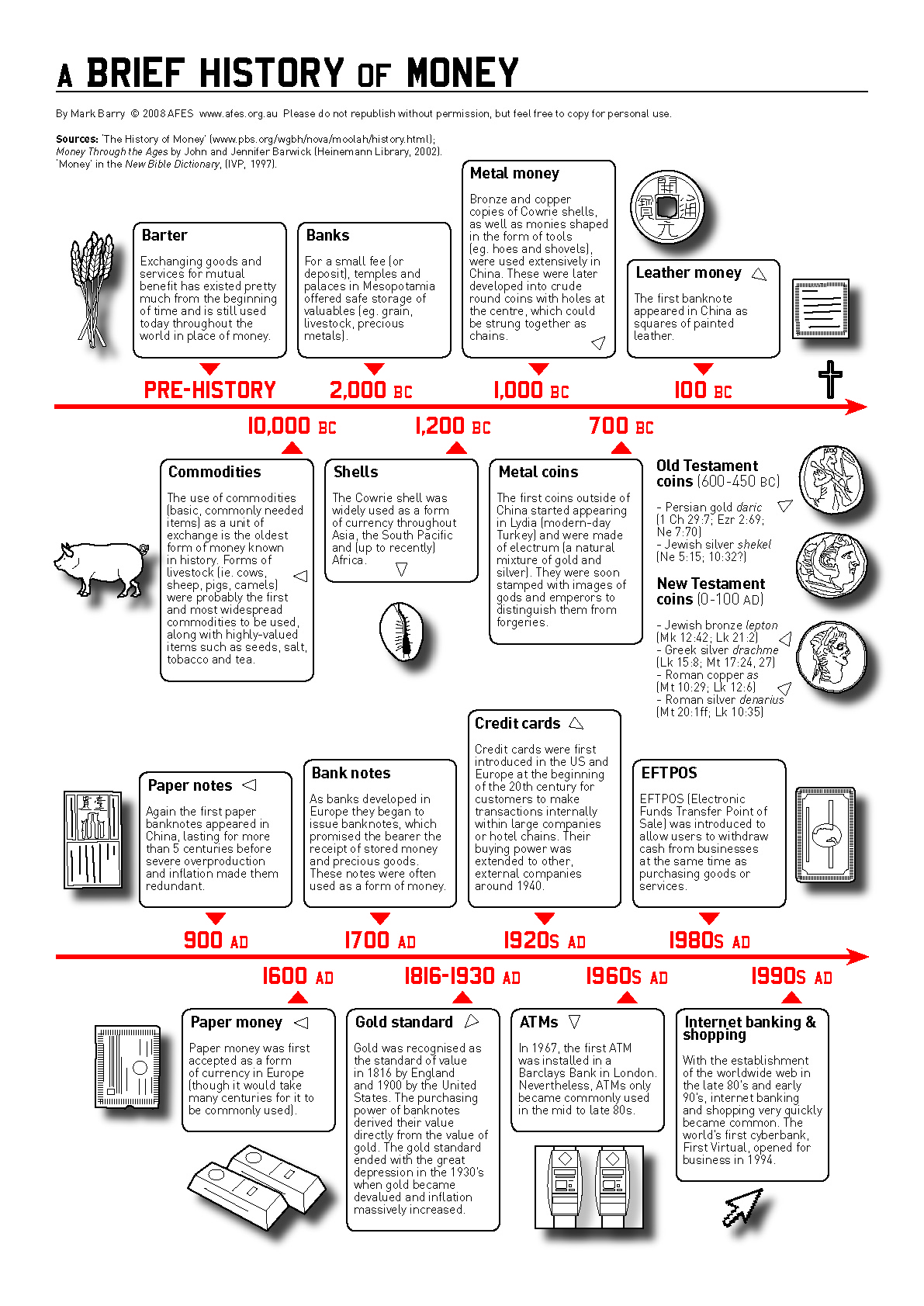
Exercise 18. Use the information obtained to do the test:
1. Exchanging goods and services for the mutual benefit existing from the beginning of time is called...
a) trade
b) investment
c) barter
2. The first banks in history were palaces and temples in...
a) Mesopotamia
b) Egypt
c) Greece
3. The first banknote as well as coins appeared in...
a) Medieval Europe
b) China
c) Japan
4. One of the universal means of exchange before 1000 BC were...
a) livestock, shells, seeds, tea, salt and tabacco
b) slaves
c) paper money
5. First metal coins outside China appeared in... and were made of...
a) Roman Empire...gold
b) Lydia...electrum
c) Asia... silver
6. ... were first introduced in the US and Europe at the beginning of the 20th century to make transactions internally with large companies or hotel chains.
a) bank notes
b) credit cards
c) ATMs
7. EFTPOS was introduced to allow users to ... and ... goods and services
a) deposit money...sell
b) transfer money... trade
c) withdraw cash... purchasing
8. Gold was recognized as the... in 1816 in Europe.
a) standard of value
b) legal tender
c) means of circulation
9. The world`s first..., First Virtual appeared in 1994
a) cyberbank
b) ATM
c) Foreign Exchange
Exercise 19. Read the text C for 8 minutes and find answers to the following questions:
1. What is euro?
2. Where is it used?
3. What place does euro obtain as a currency in the world?
4. What body is euro administered by? What function does it perform?
EURO
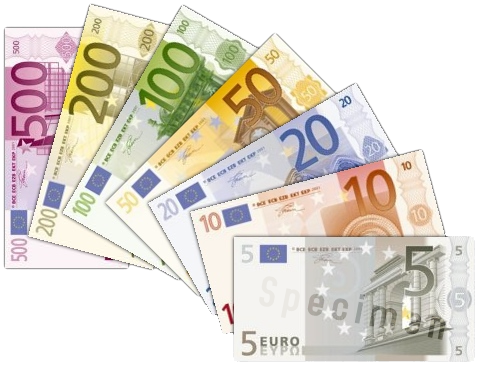
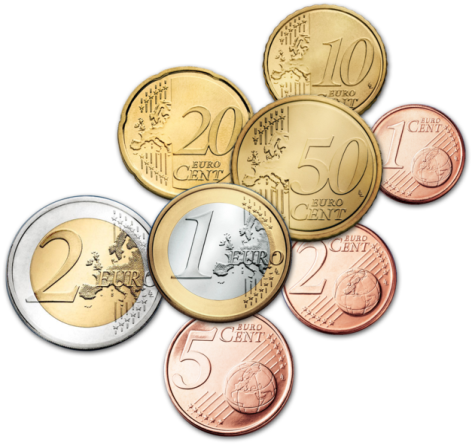 The
euro (sign: €; code: EUR) is the official currency of the eurozone:
17 of the 27 member states of the European Union (EU). It is also the
currency used by the EU institutions. The eurozone consists of
Austria, Belgium, Cyprus, Estonia, Finland, France, Germany, Greece,
Ireland, Italy, Luxembourg, Malta, the Netherlands, Portugal,
Slovakia, Slovenia and Spain. The currency is also used in a further
5 European countries (Montenegro, Andorra, Monaco, San Marino and the
Vatican) and the disputed territory of Kosovo. It is consequently
used daily by some 327 million Europeans. Additionally, over 175
million people worldwide use currencies which are pegged to the euro,
including more than 150 million people in Africa.
The
euro (sign: €; code: EUR) is the official currency of the eurozone:
17 of the 27 member states of the European Union (EU). It is also the
currency used by the EU institutions. The eurozone consists of
Austria, Belgium, Cyprus, Estonia, Finland, France, Germany, Greece,
Ireland, Italy, Luxembourg, Malta, the Netherlands, Portugal,
Slovakia, Slovenia and Spain. The currency is also used in a further
5 European countries (Montenegro, Andorra, Monaco, San Marino and the
Vatican) and the disputed territory of Kosovo. It is consequently
used daily by some 327 million Europeans. Additionally, over 175
million people worldwide use currencies which are pegged to the euro,
including more than 150 million people in Africa.
 The
euro is the second largest reserve currency as well as the second
most traded currency in the world after the US$. As of June 2010,
with more than €800 billion in circulation, the euro has the
highest combined value of banknotes and coins in circulation in the
world, having surpassed the U.S. dollar. Based on IMF estimates of
2008 GDP and purchasing power parity among the various currencies,
the eurozone is the second largest economy in the world.
The
euro is the second largest reserve currency as well as the second
most traded currency in the world after the US$. As of June 2010,
with more than €800 billion in circulation, the euro has the
highest combined value of banknotes and coins in circulation in the
world, having surpassed the U.S. dollar. Based on IMF estimates of
2008 GDP and purchasing power parity among the various currencies,
the eurozone is the second largest economy in the world.
The name euro was officially adopted on 16 December 1995. The euro was introduced to world financial markets as an accounting currency on 1 January 1999, replacing the former European Currency Unit (ECU) at a ratio of 1:1. Euro coins and banknotes entered circulation on 1 January 2002.
The euro is managed and administered by the Frankfurt-based European Central Bank (ECB) and the Eurosystem (composed of the central banks of the eurozone countries). As an independent central bank, the ECB has sole authority to set monetary policy. The Eurosystem participates in the printing, minting and distribution of notes and coins in all Member States, and the operation of the eurozone payment systems.
Look through the other most traded currencies of the world and their symbols:
